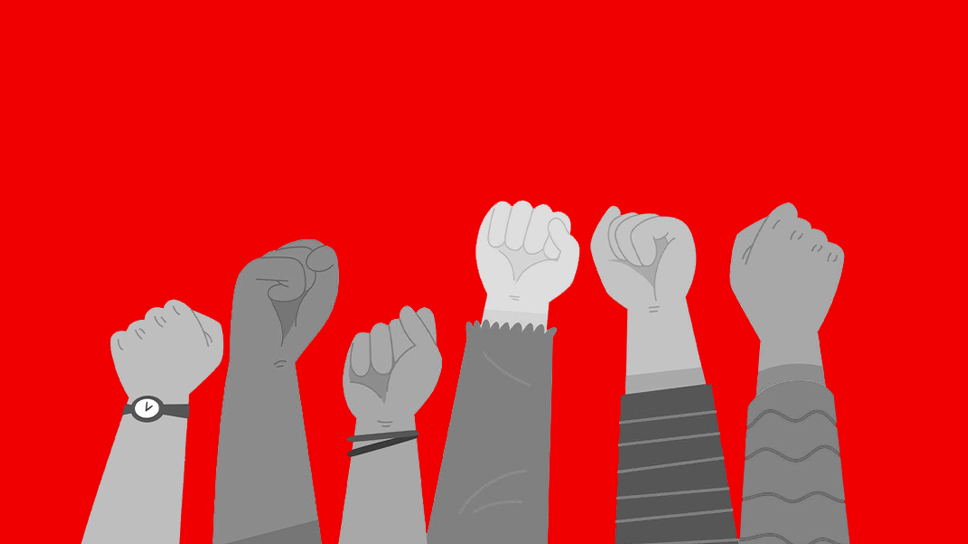id=”891″ id=”post-2593″ class=”wp-post-content-block ” itemscope itemtype=”http://schema.org/BlogPosting” itemprop=”blogPost”>
Year In Review: LCPS data reminds us that Lebanese women are now more vulnerable
By Laudy Issa
Hyperinflation, empty fridges, and bank restrictions on access to foreign currencies have come to define the Lebanese landscape in the past 12 months. Following the country’s worsening economic collapse, struggle with COVID-19, and a tragic citywide explosion, international data suggests that more than half of the people in Lebanon are now living under the poverty line.
Previous data from the Lebanese Center for Policy Studies (LCPS), a Hivos WE4L partner, showed that 36 percent of Lebanese people consider the economic situation to be their prime concern, 95 percent believe the country is heading in the wrong direction, and 98 percent believe that corruption is a very large or somewhat large problem in Lebanon.
While the latter two statistics cannot significantly change given that their values are already over the top, the first may have already increased when considering the new figures on poverty in Lebanon.
The Beirut explosion left women more vulnerable than ever
The recent explosion in Lebanon, which left 300,000 homeless, thousands injured, and over 200 dead, risks leaving women in Lebanon more disadvantaged than ever by adding yet another factor that impedes their participation in political and economic decision-making processes.
Women around the world are more likely to be poor than men, caused by factors such as the pay gap, the time they spend labouring over unpaid caregiving, unequal access to resources, and a patriarchal structure that limits their opportunities. The risk factor further amplifies when women identify with other vulnerable groups or demographics, with prominent examples being that of women Syrian refugees, women within the LGBTQ+ community, or women with physical or mental impairments.
The Lebanese Center for Policy Studies highlighted the need for international aid to help the country’s already-vulnerable citizens rather than its elites.
“Elites may not hide behind disaster. Lebanon’s vibrant civil society and local media must continue to closely scrutinize the larger bargain over the country’s future,” write Sami Atallah, Mounir Mahmalat and Sami Zoughaib from LCPS in a featured analysis on their website. “Moreover, the international community must take stock of their past complicity of reproducing the status-quo and cease their support for the parties that make up the political elite.”
Unemployment among women in Lebanon rose from 14.3 to 26 percent between 2019 and 2020, according to a UN Women report on the gendered impact of the situation in the country. Prior to the crisis, the women who did participate in Lebanon’s labor force were already very few when compared to the region. Only one in four women (23 percent, to be specific) above the age of 15 in Lebanon had a job or was seeking employment at the time. In other Arab countries, like Qatar or Kuwait, a little under 60 percent of women are actively participating in the labor force.
Women’s rights issues found short-lived hope in the revolution
On a political level, it hasn’t been much better for women in Lebanon. For example, despite a record number of 86 female candidates running for parliament seats in the 2018 elections, women only won 6 of the 128 seats. In total, women candidates gathered 5 percent of votes across the nation as discussed in-depth by LCPS.
Prior to Lebanon’s coronavirus lockdown and exacerbated socio-economic crisis, women began occupying public spaces and taking up leadership positions as part of the nationwide October 17 revolution. Protesters demanded an end to corruption, better living standards, and accountability from Lebanon’s sectarian ruling class. Among these demands, issues related to women’s rights surfaced.
“Not only do we see more people talk about political issues, which has been a staple of Lebanese society for years now, but more importantly, certain issues that were deemed personal or apolitical have been politicized,” wrote Sana Tannoury-Karam, a Middle East history scholar and activist, in an LCPS feature on the accomplishments of the October 17 revolution. “I am thinking for instance of the way people now understand and debate the banking and financial systems, feminists’ issues surrounding the body and control over it, and public spaces and their usage by the people.”
Over the past few months, the street momentum of the October 17 revolution died out. The women’s rights issues, previously propelled forward by the protests, were once again sidelined as the majority of Lebanon’s population struggles to make ends meet.
The superimposed crises –from the failing economy and political instability to the coronavirus overwhelmed healthcare system and the Beirut blast – have affected life in Lebanon. For particularly vulnerable groups like women, that has become evident in shrinking employment rates, less access to resources, higher reported assault rates, increased social exclusion, and even more period poverty.
Over the past turbulent two years, the Lebanese Center for Policy Studies has addressed women representation in leadership positions, highlighted corruption in Lebanon, and dug into the sectarian political structure of the country.
Perhaps this sentence from gender expert Julia Bou Karroum at their closed workshop for independent parliamentary candidates best sums up the current situation of women in Lebanon: “There are essential, structural obstacles we still need to get over.”
You can find the full list of research published by LCPS on the 2018 election here.





